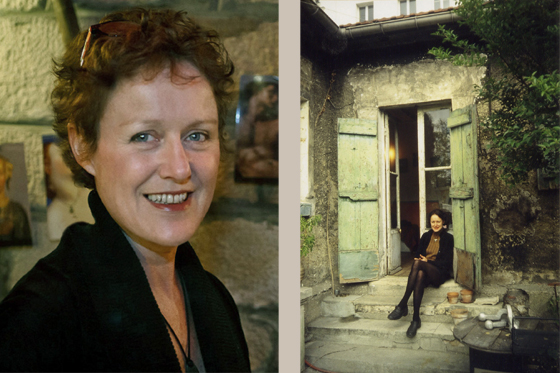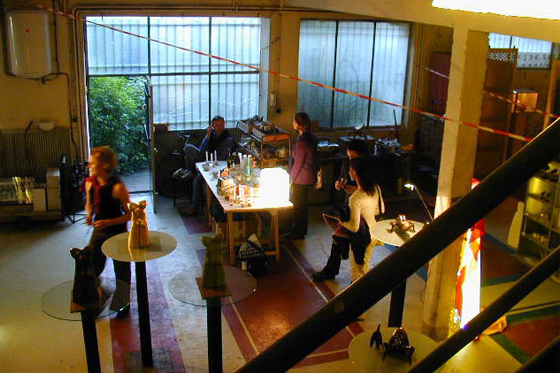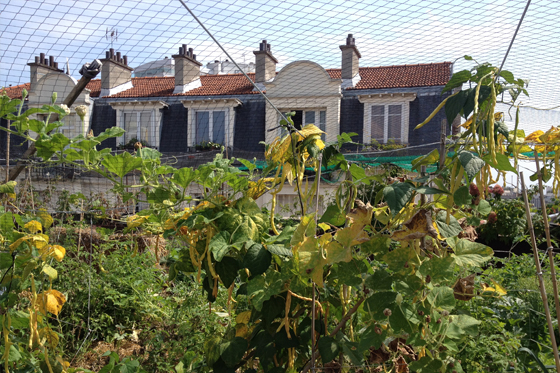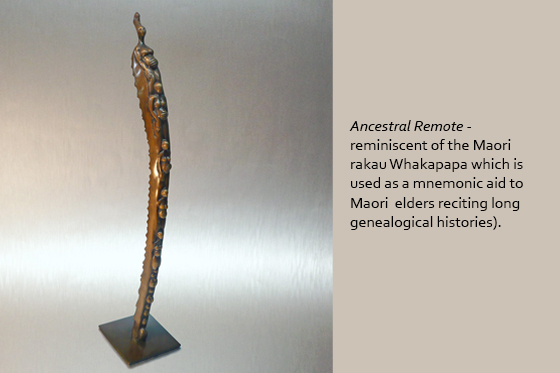MARIAN FOUNTAIN – Sculptor & medal artist
Marian Fountain is a New Zealand artist who has lived in Paris for 22 years and returns regularly to the country of her birth. She takes her inspiration from simple and recognisable forms in nature: a fish, a leaf, a pea pod – food from the earth. And on the surface of these forms the traces of underlying life – movement and energy are evoked with fine reliefs of waves, camouflages or tattoo. Her work has been exhibited at the British Museum, The National Gallery of Scotland, the Museo Archeologico of Milan, York Museum, Auckland Museum, and the French Mint. Some of her creations include the winners’ medals for the Commonwealth Games in 1990 and the America’s Cup in 2003, and the “Entente Cordiale” centenary medal in 2004.
Fountain currently lives in an ‘atelier d’artiste de la Ville de Paris’ (social housing for artists), which was provided for her in 2008. Up until that time, from the time she arrived in Paris (1991), she had been living in official squats. For the first eight years, she was in a little house built in 1900 in Montmartre with no bathroom and an outside toilet. Conditions were very ‘bohème’ but the garden cascaded down three terraces to the Bateau Lavoir at the bottom. ” The little house felt like the Grandma of Paris so I had an open-door policy and met Parisians that way.”
For the next eight years she lived in a 400m2 factory space in the centre of Paris, and there too it was open door with people using
the downstairs area for theatre, music and various courses. “In 2000 we held ‘Picnicart’ parties every month where people bought
their own food and five or six artists exhibited.”
She is happy now to have her own workshop and living space with a garden at the end of a grassy courtyard. “I have been extremely
lucky to be able to work outside and to have had three gardens and sky in Paris.”
First experiences with bronze casting – “It was actually a piece of wood that introduced me to the foundry. I was in my second year at art school studying design and sculpture. In the wood workshop on the first floor, a small piece of wood that I was trying to mill, shot out of its clamp and nearly took my stomach out on its fast trajectory towards the window, which luckily was open. Rather shaken, I went outside to look for the wood and came across David Reid, who ran the foundry in the courtyard. Then and there he started showing me the process of simply burying polystyrene and pouring metal into it : the simplest of molds/casts. I was immediately hooked. Somehow it seemed to me a more ‘balanced’ process than the violent machines often used to manipulate wood. And it seemed you could create something from scratch.
An opportunity to go to Italy and receive training at the Rome Mint – “I’ve been involved with the British Art Medal Society since 1984, attending weekends most years which provide a fantastic opportunity to visit museums with curators, around the UK and on the continent. During an international congress (FIDEM) dinner in 1984 in Stockholm, I met the person in charge of medals at FAO in Rome, who helped me apply for the school at the Rome Mint. There were no fees but I plunged into Roman life, earning my own living and also making enough work to exhibit in a gallery on the Spanish Steps. I was involved with a family who cast sculptures in their foundry on the seventh floor of the medieval tower where they lived. It was fantastic to have first-hand experience of the artistic and artisanal traditions in Italy.”
A sense of touch shared with our ancestors – “It’s a thrill when sculpting to feel in touch with the artisan ancestors by repeating exactly the same manual gestures, understanding better how many artefacts from the plethora of cultures and eras were made. Through practice, the hand-eye coordination blends the conscious and the unconscious, and we begin to feel part of the collective lake of consciousness. I feel that creating things with the hands is like keeping the sap flowing through the branches and roots of a plant, keeping the organism (myself and the community) alive and healthy.” Fountain’s Ancestral Remote is reminiscent of Maori rakau whakapapa (used as a mnemonic aid to Maori elders reciting long genealogical histories).
Bridging Time – ” Bronze is a material which has a rich history in many cultures through time. Making sculptures from it seems to bridge time, informing us at once of our present and our distant ancestral past, and emphasizing that the present is but a notch in time. In the process of making a sculpture I mainly work with plasticine, wax and plaster. They are natural materials which are pleasing to manipulate, not toxic, and furthermore the negative and positive steps in mold-making add more stages in which to intervene, building up a situation of many creative possibilities.
See how Marian Fountain came to exhibit in Fe29 Gallery, and learn more about Marian and her works.






